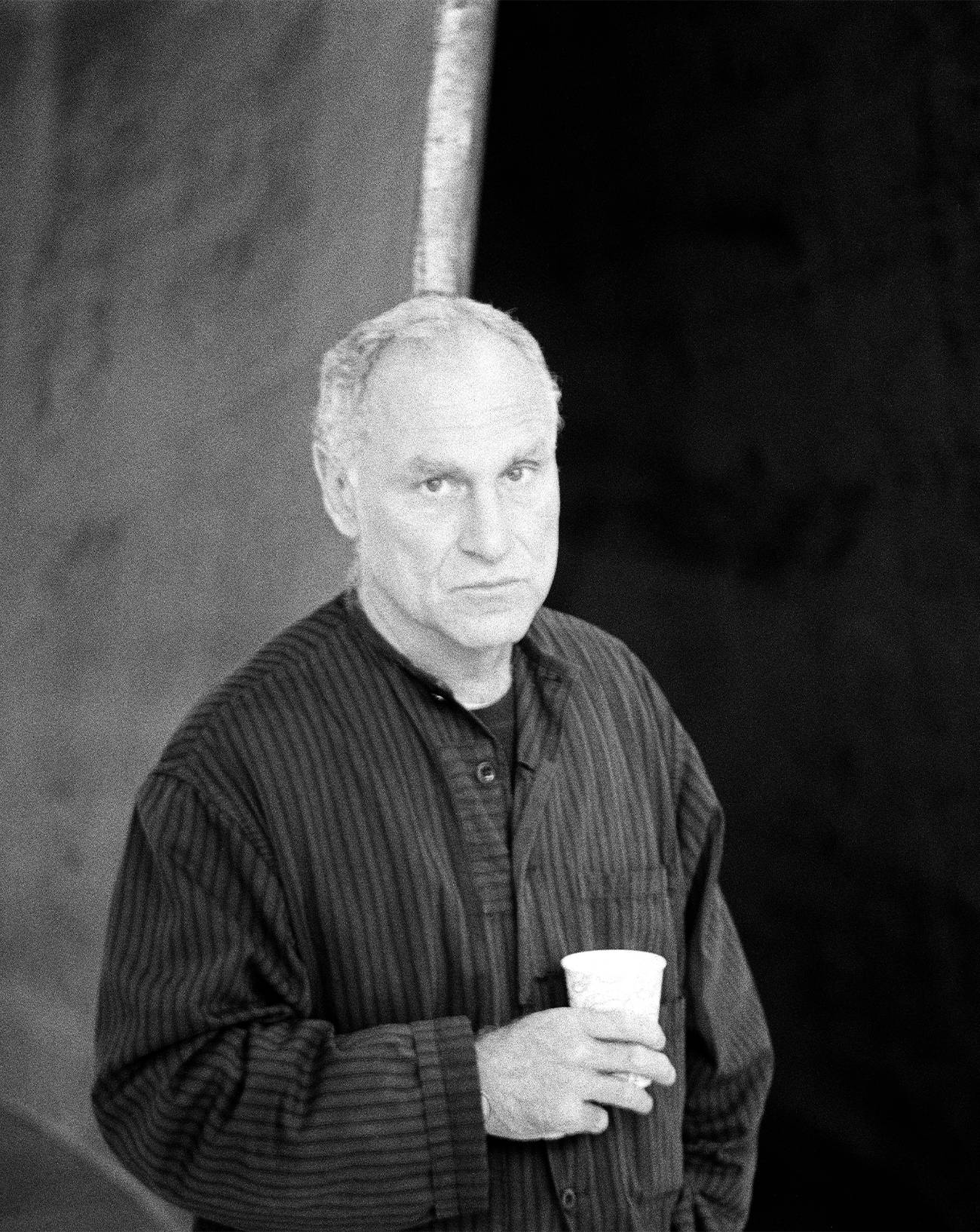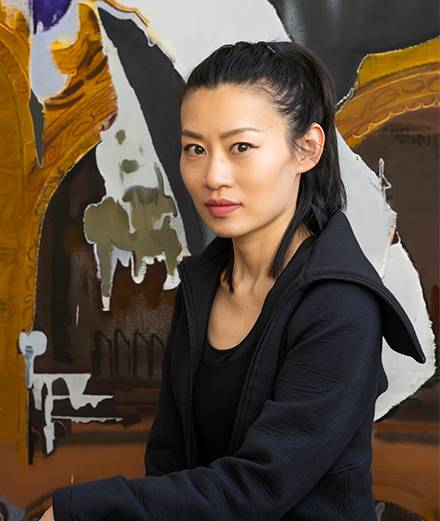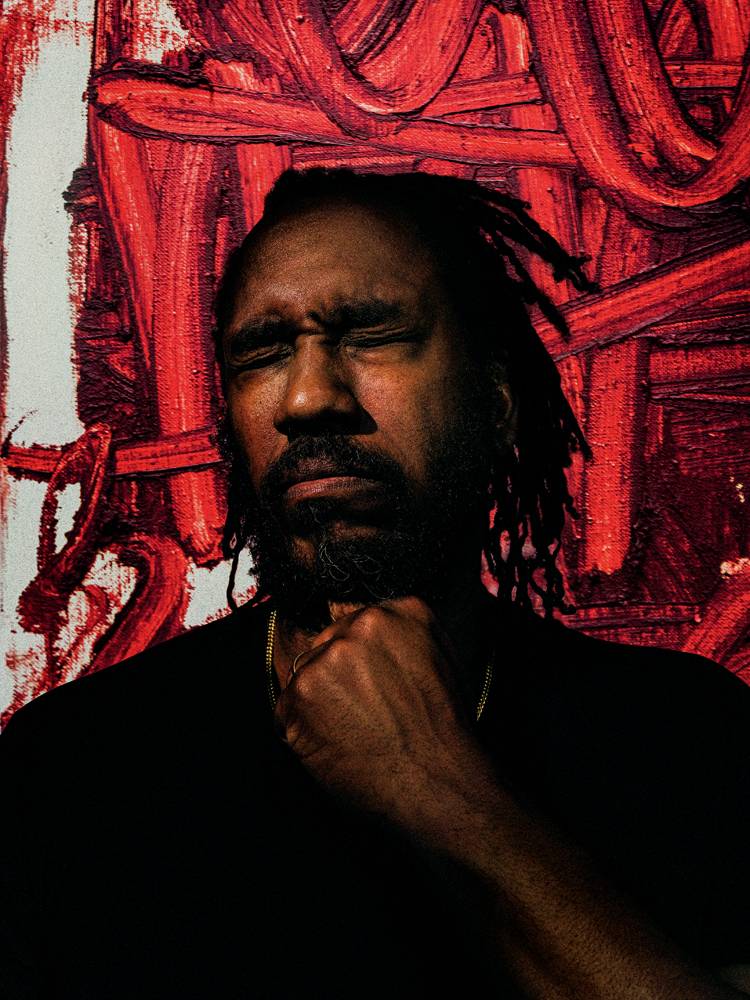![“Untitled” (After Alexander Roslin) [2018]. Huile sur toile, 80 x 60 cm.](https://numero.twic.pics/images/flexible_grid/100/ewa_juszkiewicz-point-de-vue-eric-troncy-numero-magazine-4.png?twic=v1/quality=83/truecolor=true/output=jpeg)
![“Untitled” (After Alexander Roslin) [2018]. Huile sur toile, 80 x 60 cm.](image:https://www.numero.com/sites/default/files/images/flexible_grid/100/ewa_juszkiewicz-point-de-vue-eric-troncy-numero-magazine-4.png)
At just 35, she has already produced a solid pictorial oeuvre that is almost exclusively female. Women, mothers, wives, daughters who often remind us of something, not because we know them or because they are our contemporaries (no Miley Cyrus, unfortunately, nor Greta Thunberg, fortunately), but because they’ve already been painted by others, in previous centuries. The enlightened viewer is thus “reunited” with them in Ewa Juszkiewicz’s work, but, in the intimacy of her Warsaw studio, she has teletransported them to today’s world by introducing a few minor but spectacular modifications.
There’s often “something not quite right” in Juszkiewicz’s paintings. A bit like the moustache that Marcel Duchamp added to a reproduction of the Mona Lisa in 1919 (L.H.O.O.Q.): obviously La Giocanda is still recognizable, but this unexpected facial hair pushes the portrait into another, perhaps temporal, dimension. Juszkiewicz doesn’t use readymade reproductions but paints pictures that are largely identical to the originals, with a preference for portraits of the 15th to 19th centuries, although not exclusively. While studying art in general and painting in particular at both the fine arts school in Dantzig (2004–09) and the academy of fine arts in Krakow (2010–13), she acquired sufficient technique to copy to perfection not just the great but also the lesser and mediocre masters – in other words to reproduce faithfully any picture she wishes. Which of course on its own would not make her an artist, simply a copyist. But her exceptional technique is merely an instrument serving a bigger project, a hybridization no doubt of an “appropriationist” approach (as practised by certain American artists in the late 1970s) and highly contemporary attitudes that derive from both instant access to all the images on the Internet and an evident desacralization of history, which touches just about everything today.
![“Sisters” (After Anton Graff) [2014]. Huile sur toile, 142 x 116 cm.](https://numero.twic.pics/images/flexible_grid/100/ewa_juszkiewicz-point-de-vue-eric-troncy-numero-magazine-3.png?twic=v1/quality=83/truecolor=true/output=jpeg)
![“Sisters” (After Anton Graff) [2014]. Huile sur toile, 142 x 116 cm.](image:https://www.numero.com/sites/default/files/images/flexible_grid/100/ewa_juszkiewicz-point-de-vue-eric-troncy-numero-magazine-3.png)
For, let’s face it, the modification of historic images has now become commonplace. Take the poster for the 2017 Cannes Film Festival: essentially a 1959 shot showing Claudia Cardinale dancing among the rooftops of Rome, her skirt lifted by the wind to expose a glimpse of her legs, it was retouched to give Cardinale a thinner waist, a bigger bust and more slender arms. Or the 2009 poster for a show about film director Jacques Tati, from which M. Hulot’s famous pipe was airbrushed out in favour of a child’s toy windmill. A photo of Jean-Paul Sartre, which was used on the cover of a Bibliothèque nationale de France catalogue in 2005, suffered the same fate, the writer’s legendary cigarette being edited out. Such retouches and modifications are com- mon currency in fashion photography, but they make for a more curious effect with respect to images that already had a life before being retouched, and are subsequently altered in response to the mores of our times.
In the same way, Juszkiewicz’s corrected pictures have had a life before her interventions, and the female figures represented in them have also had a life before being portrayed, one which their portraits usually try to capture at least with respect to context – clothing, hairstyles, jewellery and poses are carefully chosen to indicate social rank. After processing by Juszkiewicz, none of that actually disappears, but is reorganized in a rather disturbing fashion: when a subject’s head is replaced by thick vegetation, the shadow of Surrealism and the Comte de Lautréamont’s “fortuitous encounter on a dissecting table between a sewing machine and an umbrella” immediately come to mind. Indeed this might be the essence of Juszkiewicz’s artistic project: leading the history of classic and modern painting towards a 21st-century version of the Surreal. While it’s become common for fashion designers to look for inspiration (sometimes to the point of parody) in art history, it’s far more unusual for artists to be inspired by the world of fashion. But Juszkiewicz says it has greatly influenced her. “I discovered the work of Rei Kawakubo, Iris van Herpen and Alexander McQueen,” she explained to Numéro. “At the same time I’d always been fascinated by the past, the history of the portrait, of beauty and of fashion. I started to ask myself what the limits of portraiture were. How can you represent and apprehend a human body without a face? I was interested in the possibility of replacing the face by objects and phenomena that don’t occur in nature. As a result, I started submitting traditional portraiture to various experiments, observing the effects of treatments such as transforming the face into another form, integrating it into the environment or completely erasing it.”
![<p><em>Untitled (After Charles Howard Hodges) </em>[2019]. Huile sur toile, 115 x 90 cm.</p>](https://numero.twic.pics/images/gallery/50/ewa_juszkiewicz-point-de-vue-eric-troncy-numero-magazine-5.png)
Untitled (After Charles Howard Hodges) [2019]. Huile sur toile, 115 x 90 cm.
![<p><em>Portrait of a Lady (After Louis Léopold Boilly) </em>[2019]. Huile sur toile, 200 x 160 cm.</p>](https://numero.twic.pics/images/gallery/50/ewa_juszkiewicz-point-de-vue-eric-troncy-numero-magazine-2.png)
Portrait of a Lady (After Louis Léopold Boilly) [2019]. Huile sur toile, 200 x 160 cm.
When, in 1807, Louis Léopold Boilly painted the portrait of Mme Saint-Ange Chevrier (now at the Nationalmuseum, Stockholm), he depicted her with her eyes raised to heaven, her doll-like face exuding trustworthiness. Juszkiewicz’s version is, to start with, more than twice as large, measuring 2 m in height where the original is under 80 cm and, above all, the doll-like face with its angelic expression is gone, covered with a mass of fabric that matches the sitter’s dress. From this strange sort of collapsed turban, various plants and a lock of hair protrude. As for Christoffer Wilhelm Eckersberg’s 1817 portrait of Elisabeth Brockenhuus, which was itself taken from a painting by Emil Hannover, Juszkiewicz has given us an almost Cronenbergian version, Mme Brockenhuus’s hair having been plaited all over her face, covering it up like a sinister mask.
This simple and remarkably effective process becomes more complex when Juszkiewicz tries her hand at works that are not so well known, taking her project of “reprises” in less literal directions that give it all its particularity. On the one hand there’s her “reprise” of Magritte’s famous 1935 picture L’Invention collective, which is identical to the original – given the parameters of her project, there was no need for Juszkiewicz to change anything at all about this woman reclining on the sand with a fish for a head. Things become more complicated when she “covers” (for unlike Sturtevant, who claimed that her versions of paintings produced by great artists were in fact “originals,” Juszkiewicz’s are really covers in the sense of reworked versions of songs) more abstract works by Paul Klee, Wassily Kandinsky or Jean Metzinger, or when she works with documents relating to paintings that have been damaged, destroyed or that have disappeared, or produces a painted version of a sculpture, such as Otto Freundlich’s 1912 Large Head (The New Man), a plaster work that was labelled “degenerate” by the Nazis.
Juszkiewicz’s essentially figurative painting, so simple to look at, nonetheless possesses a conceptual dimension that is only occasionally found in current pictorial pro- duction. For while retouching and alterations are commonplace in digital images, they’re not generally applied to painting with the techniques of painting. “I work every day, several hours a day,” explains Juszkiewicz. “The nature and technique of my paintings require long and continuous work, which, for a single canvas, usually takes several weeks. I use traditional techniques, the old-fashioned way. My paintings are made up of several layers and a large number of glazes. The whole process is very laborious. I pay a lot of attention to details, which I spend hours refining.” And it’s precisely because so much care has been put into these curiously reworked portraits that Juszkiewicz’s oeuvre still has the power to “disturb” us.
![“A Rest” (After Anton Einsle) [2014]. Huile sur toile, 180 x 125 cm.](https://numero.twic.pics/images/flexible_grid/100/ewa_juszkiewicz-point-de-vue-eric-troncy-numero-magazine-1.png?twic=v1/quality=83/truecolor=true/output=jpeg)
![“A Rest” (After Anton Einsle) [2014]. Huile sur toile, 180 x 125 cm.](image:https://www.numero.com/sites/default/files/images/flexible_grid/100/ewa_juszkiewicz-point-de-vue-eric-troncy-numero-magazine-1.png)









